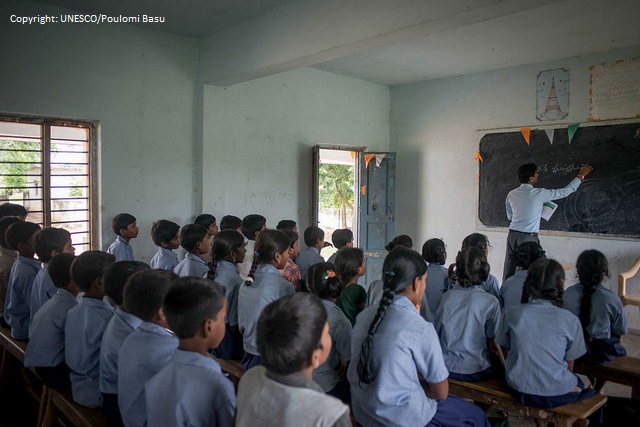Elementary education is the foundation of knowledge, it includes the very initial elements of knowledge and information which are served and taught to the children. A child is like a blank paper during the childhood and during this time the human mind is in its super active stage it is also been scientifically proven that till the age of 5 years the mind of the child is fully developed. Thus, it is very important to know that during the first five years, the child should be given and taught best of the knowledge and information. The first five years are also very crucial as all the psychomotor skills, cognitive, emotional, social and learning skills of the child are developing at their best. It is the biggest responsibility of parents as well as of the teachers that they provide the growing up children an accurate and truthful knowledge, they should not hinder the curiosity factor and spirit to explore in the child. While considering this factor seriously during the adoption of Constitution in 1950 it was aimed to achieve the target of Universalization of Elementary Education within the frame of further ten years i.e. by 1960. Since then despite of many limitations and struggles India has achieved significant advancements, close to 200 million children study in primary and secondary schools and among them there is a huge strength of rural children who belong to rural areas spread over in 600,000 villages.
Elementary education is very significant part of the childhood hence it is also essential to make this phase of education truly enlightening and informative for the children. The main issue with primary education in India is not with the children in urban areas but rather with the children who belong to the rural areas. Whereas the private primary schools in urban areas are making gradual improvements in their infrastructures, facilities, teaching patterns and skills and also trying to improve the teaching aptitudes of their teachers on the other hand the primary schools in rural areas are still struggling with their basic issues of infrastructures, lack of good teachers, less wages of teachers, absentees and lack of good academic performances of the students. Government’s leading project; Sarva Siksha Abhiyaan (SSA) however has brought many of the good changes and improvements in primary education but still many loopholes have been left into it which demand rectification.

Following are the Challenges which are faced by the rural areas with regard to the primary education of the rural children:
- Infrastructure: The infrastructure of primary schools in the rural areas are in pathetic conditions, the building are almost ruined, the ceiling are leaking, there are no toilet facilities, rooms are suffocated without ventilation.
- Teachers and teaching aptitude: The teachers appointed in those primary schools lack in teaching skills and aptitude, there is no firm basis of selecting a good teacher for teaching in those schools in fact one teacher handles all the classes from grade 1-5 and even in some schools the teacher is also the principal. Some teachers are themselves so dumb and unaware that results in degradation of learning aptitude of the students.
- Books, stationery and other facilities: There is a lack of funds provided to those primary schools thereby the students do not get required books, stationary and other educational material.
- Wages and incentives of the teachers: The wages and incentives are meagre for the teachers of those primary schools in order to motivate them to teach properly. Wages so are less that the teachers are almost demotivated and thus they do not want to make any efforts to show their teaching skills. Teaching becomes like doing social service in those schools.
- Learning skills of the children: The learning skills of the students are found to be very low and weak, the students are not motivated and have nothing new to learn, and moreover the teachers are also not interested in teaching hence the students lack in attentiveness, knowledge and awareness. The condition is so terrible in some rural schools that the students of the fifth grade don’t even know how to write their names.
- Number of primary school is less: The number of primary schools is less in the rural areas, due to long distance of the schools from the living areas parents do not prefer to send their children to the schools. Girls are not allowed to go far places to study.
Primary schools in rural areas certainly need development; they need better teachers, infrastructure, facilities and funds. The funds provided are not properly utilized the management is very weak; there is a need to appoint honest and dedicated administrators/educational officers in those areas who can seriously bring improvements in the primary schools. The condition of the Daily Care Centres ( Anganwadi ) is also not so pleasing the quality of food and teaching are getting low. Primary education is an important part in the growth of the child, but the primary schools of the rural areas are in a very bad shape they have nothing alike a good place where education is imparted.


























We are in the 69th year of independence and it is a matter of disgrace that our villages lack a set of basic amenities even after such a long time! As the consequences of this, education in these areas face a lot of dramatic challenges. Lack of infrastructure, facilities like books, stationary and others, wages for the teachers and related funds and many more! Apart from it, the reconciliation of the daily care centres is one of the points to be pondered upon.